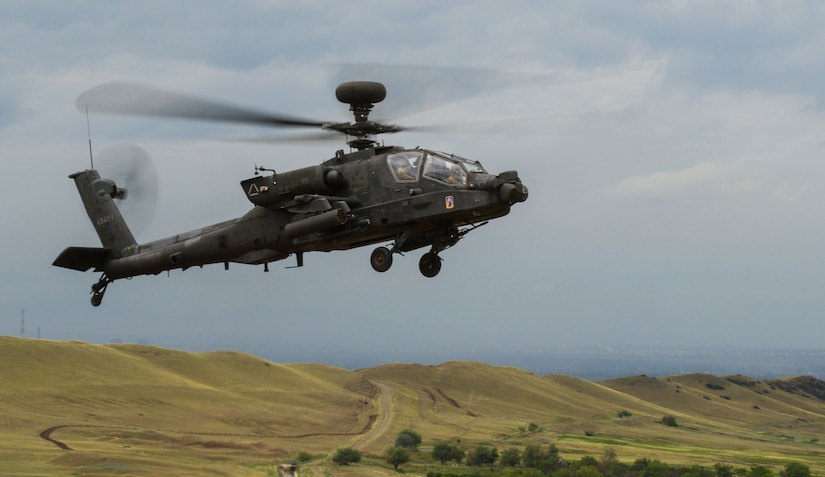By Army Sgt. Kris Bonet, 24th Press Camp Headquarters
VAZIANI TRAINING AREA, Georgia -- Anyone who’s ever played a
game of chess knows what it takes to win a match: patience, concentration and a
bit of foresight.
Knowing the pieces’ capabilities and limitations for maximum
effectiveness is crucial to checkmate the opponent’s king. Simply put, it takes
skill.
Skill is exactly what soldiers with 2nd Battalion, 5th
Cavalry Regiment and 3rd Squadron, 2nd Cavalry Regiment demonstrated during a
combined arms live-fire exercise during Noble Partner 18 here Aug. 12.
Heavy Weapons
Instead of rolling in with rooks, bishops and knights,
soldiers brought Bradley fighting vehicles, M1A2 Abrams tanks, Stryker infantry
carrier vehicles and AH-64 Apache helicopters.
The training exercise’s goal was to deploy a variety of
firepower simultaneously and have a dynamic presence on the battlefield. The
units involved practiced interoperability, not only between each other, but
also with a platoon of Georgian army BMP-2 infantry fighting vehicles with the
4th Mechanized Brigade.
“That’s what the Army is all about: bringing all the
warfighting functions to fight and win our nation’s wars,” said Army Command
Sgt. Maj. Aron Alexander, the battalion sergeant major with 2-5 CAV. “It’s a
great opportunity to test all of our capabilities in terms of being
expeditionary and being able to partner with other units located within U.S.
Army Europe and [with] multinational partners.”
Weather proved to be an additional challenge during the
exercise. Rain covered the range on the days prior, and the strengths of every
moving piece on the battlefield had to be considered during mission planning.
“Tracked vehicles do a little bit better on the mud than
wheeled vehicles,” said Army Capt. Richard Williamson, the exercise commander
with 2-5 CAV. “To mitigate this, the Strykers move to the higher ground to
establish their positions. My tanks and Bradleys will be on the lower ground,
where we will have the organic ability to recover them.”
Another challenge was language. Communicating effectively
with the Georgian platoon was necessary to maintain the dynamics of the complex
area of operations.
“Once we got past the language barrier, we understood they
don’t operate too different from us,” Williamson said. “Beyond that, it’s a
matter of understanding their doctrine and blending it with ours to provide the
most lethal possibilities for the exercise today.”
To break through the language barrier, Georgian interpreters
were present, shoulder to shoulder with the Georgian leadership, to quickly
translate orders between the host nation and American forces.
“This is my first time translating between the armies,” said
Alex Vegiashvili, a college student serving as an interpreter with the Georgian
army. “Seeing this live fire is really amazing. When I told my family I was
going to be an interpreter for the Georgian army, they were very excited.”
Practicing Warfighting Skills
By employing several different vehicles at one time, younger
soldiers learned vehicle recognition on the battlefield and their respective
capabilities, said Army Sgt. 1st Class Anthony Sasscer, platoon sergeant with
2-5 CAV. Even the more seasoned noncommissioned officers got a chance to
refresh their perspective.
“It makes me humble because I feel like I have a good grasp
on this, but when you take on something this large in scale, it makes you take
a step back and reconsider new ways of executing it,” Sasscer said.
Another successful day of training ended with a checkmate
for the allies and partners of Noble Partner 18.
“Across the board, everybody was impressed with the
capabilities the Georgians brought to bear, and how lethal those guys were out
there,” Alexander said. “I’m very impressed with their performance today.”

No comments:
Post a Comment